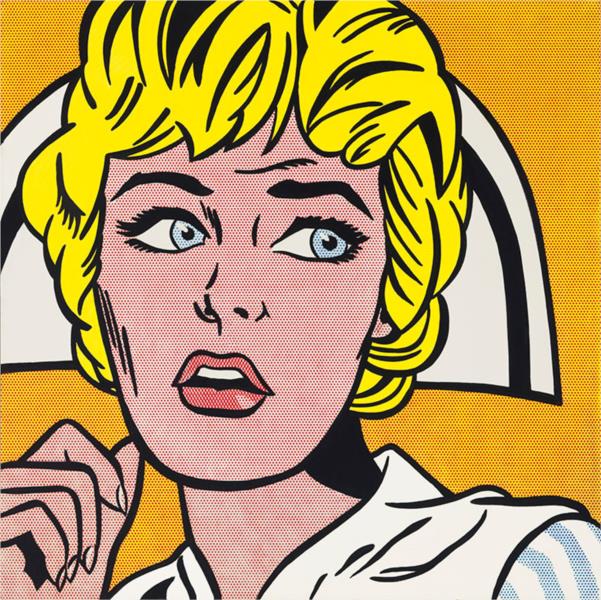When Roy Lichtenstein’s bold, comic-inspired canvases first exploded onto the American art scene in the early 1960s, they were met with both acclaim and outrage. Critics questioned whether his appropriated imagery constituted art, while others hailed him as a visionary. Fast forward six decades, and Lichtenstein is firmly established as one of the most influential figures in 20th-century art. Not only did he help pioneer the Pop Art movement alongside Andy Warhol and Claes Oldenburg, but his legacy continues to echo in the practices of contemporary artists—and his market value has never been stronger.
From Comics to Canvas: A Radical Shift
Lichtenstein’s journey into Pop Art was both a reaction to and a rebellion against the prevailing Abstract Expressionist movement of the 1950s. While artists like Jackson Pollock and Mark Rothko explored emotional depth and gestural abstraction, Lichtenstein turned toward the mass-produced aesthetic of commercial printing. He found inspiration in comic strips, advertisements, and everyday Americana.
In works like Whaam! (1963) and Drowning Girl (1963), Lichtenstein reimagined comic book panels on monumental canvases, painstakingly replicating the Ben-Day dots used in commercial printing to simulate color and shading. These works, with their stylized lines, primary colors, and dramatic narratives, blurred the line between “high” and “low” culture, forcing the art world to confront its own elitism.
A Master of Irony and Precision
Lichtenstein’s genius lay in his ability to recontextualize mundane imagery, transforming disposable pop culture into enduring fine art. His process was meticulous and deliberate, belying the mechanical appearance of his work. By mimicking commercial printing techniques with paint and canvas, he challenged the notion of authenticity and originality in art.

He was not merely copying comic panels—he was critiquing them, elevating them, and injecting them with new meaning. His work addressed themes of consumerism, identity, romance, and heroism, all while maintaining a distinct sense of irony. This blend of conceptual rigor and visual accessibility made his work appealing to both scholars and collectors alike.
Influence on Contemporary Artists
Lichtenstein’s impact is visible in the work of countless contemporary artists who explore the intersections of pop culture, advertising, and fine art. Artists like Jeff Koons, Takashi Murakami, and KAWS owe a significant debt to Lichtenstein’s innovations. Murakami’s "Superflat" aesthetic and KAWS’ use of cartoon figures echo Lichtenstein’s playful appropriation of mass media, while Koons’ glossy, manufactured surfaces resonate with the Pop Art sensibility of slickness and irony.

Contemporary artists who embrace digital media and graphic design also draw inspiration from Lichtenstein’s graphic clarity and typographic boldness. In the age of Instagram and visual saturation, his work feels more relevant than ever—predating our obsession with curated images and stylized narratives.
Moreover, Lichtenstein’s use of pastiche and appropriation paved the way for postmodernism and conceptual art. His legacy lives on in the works of Barbara Kruger, Richard Prince, and others who use text, image, and irony to challenge cultural norms.
Lichtenstein in the Contemporary Art Market
Roy Lichtenstein is not just a critical darling—he is a blue-chip artist whose work consistently performs at the top of the market. His pieces are regularly featured in major auctions at Sotheby’s, Christie’s, and Phillips, often achieving multimillion-dollar results.
In 2015, his painting Nurse (1964) sold at Christie’s for $95.4 million, setting a record for the artist and marking one of the most expensive works by any American artist at the time. This was a watershed moment, affirming Lichtenstein's place in the pantheon of market giants.

The demand for his work spans continents, with strong interest from American, European, and increasingly Asian collectors. His broad appeal stems not only from his iconic style but also from his role as a historical bridge between modern and contemporary art. Museums and institutions continue to showcase his work, and his presence in major permanent collections—such as MoMA, the Tate, and the Art Institute of Chicago—only adds to his prestige and desirability.
Lichtenstein Beyond the Canvas
Lichtenstein’s influence extends beyond painting. His forays into sculpture, murals, and even furniture design showcased his ability to translate his visual language into multiple mediums. Today, his large-scale public sculptures—like Brushstroke Group (1996) and Modern Head (1989)—can be found in cities around the world, symbolizing his enduring cultural impact.
The Lichtenstein Foundation, established in 1999, continues to promote scholarship and support projects related to his work, ensuring that new generations of artists and art lovers remain connected to his legacy.
A Pop Vision That Still Resonates
Roy Lichtenstein’s career was a masterclass in turning the ordinary into the extraordinary. His bold, comic-inspired visuals questioned the boundaries of art, offered commentary on contemporary life, and forever altered the visual landscape. In an era where image culture dominates everything from advertising to social media, his insights into visual consumption feel more prescient than ever.
For collectors, curators, and artists alike, Lichtenstein represents more than a chapter in art history—he is a continuing conversation. His aesthetic clarity, conceptual strength, and market appeal ensure that his legacy isn’t just intact—it’s thriving.
Whether you encounter a Lichtenstein in a museum, a private collection, or on the auction block, the impact is the same: a flash of color, a jolt of recognition, and a moment of reflection. In the world of contemporary art, few figures loom as large—or as brightly—as Roy Lichtenstein.
For more information or to buy Roy Lichtenstein original art, contact info@guyhepner.com or contact our team to sell Roy Lichtenstein prints.
